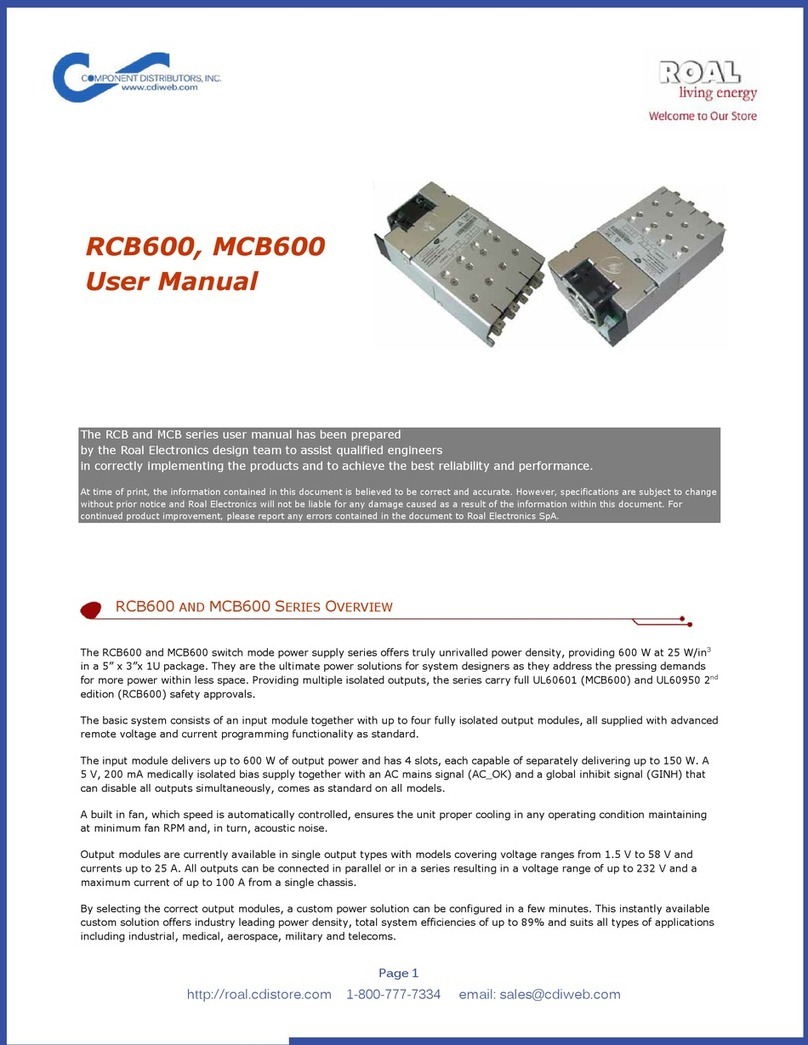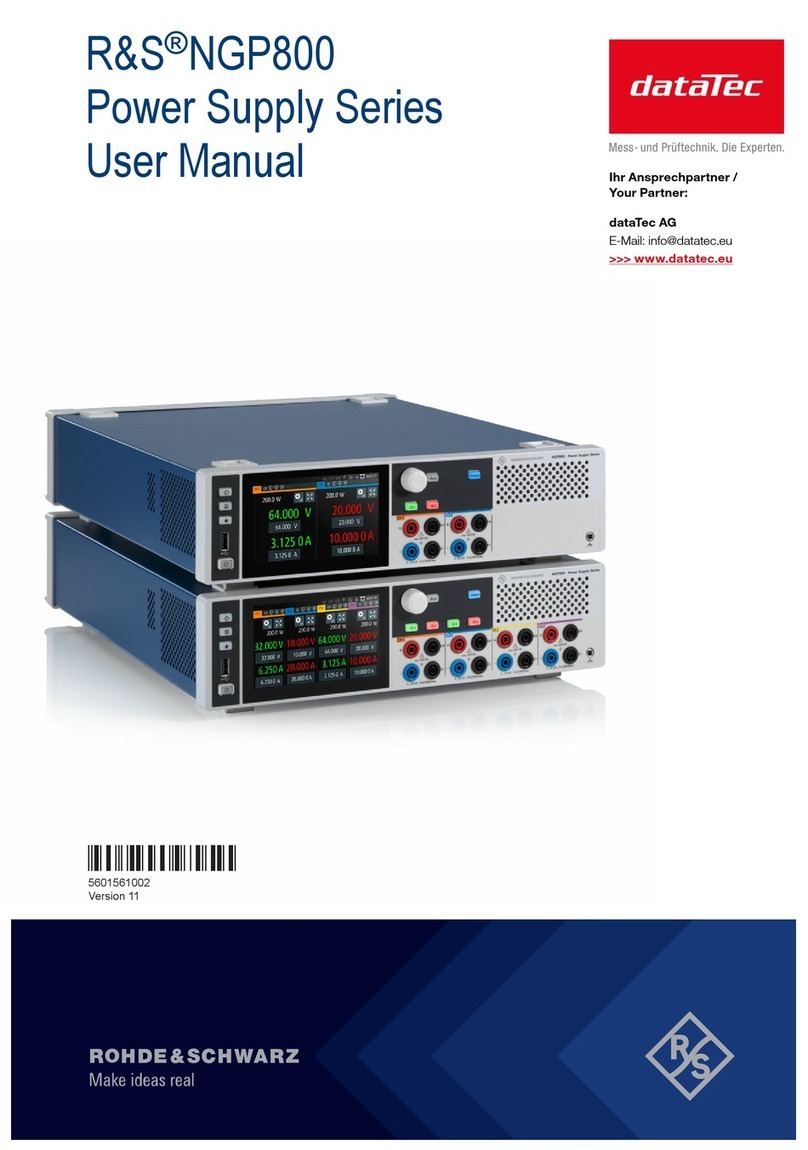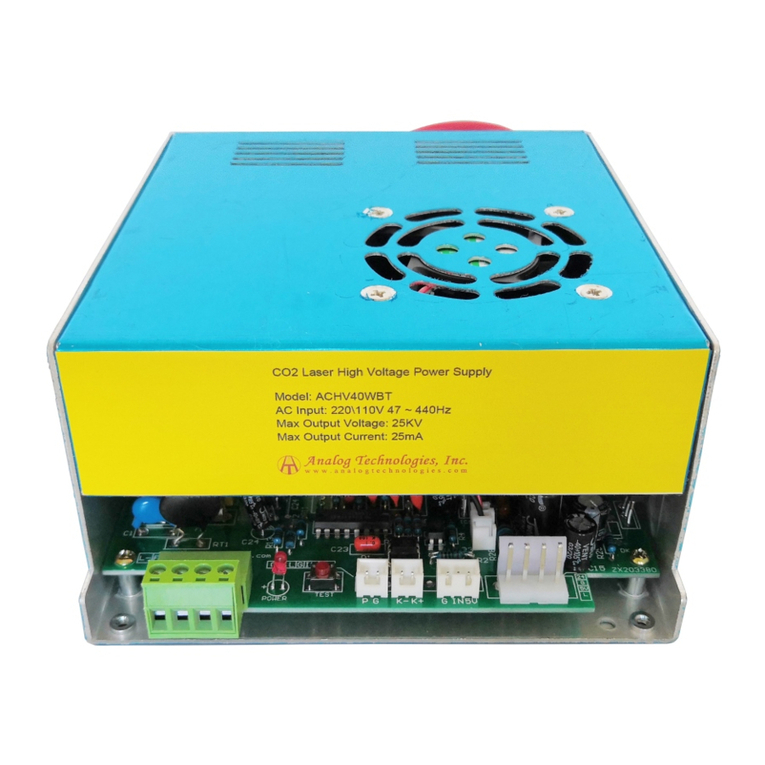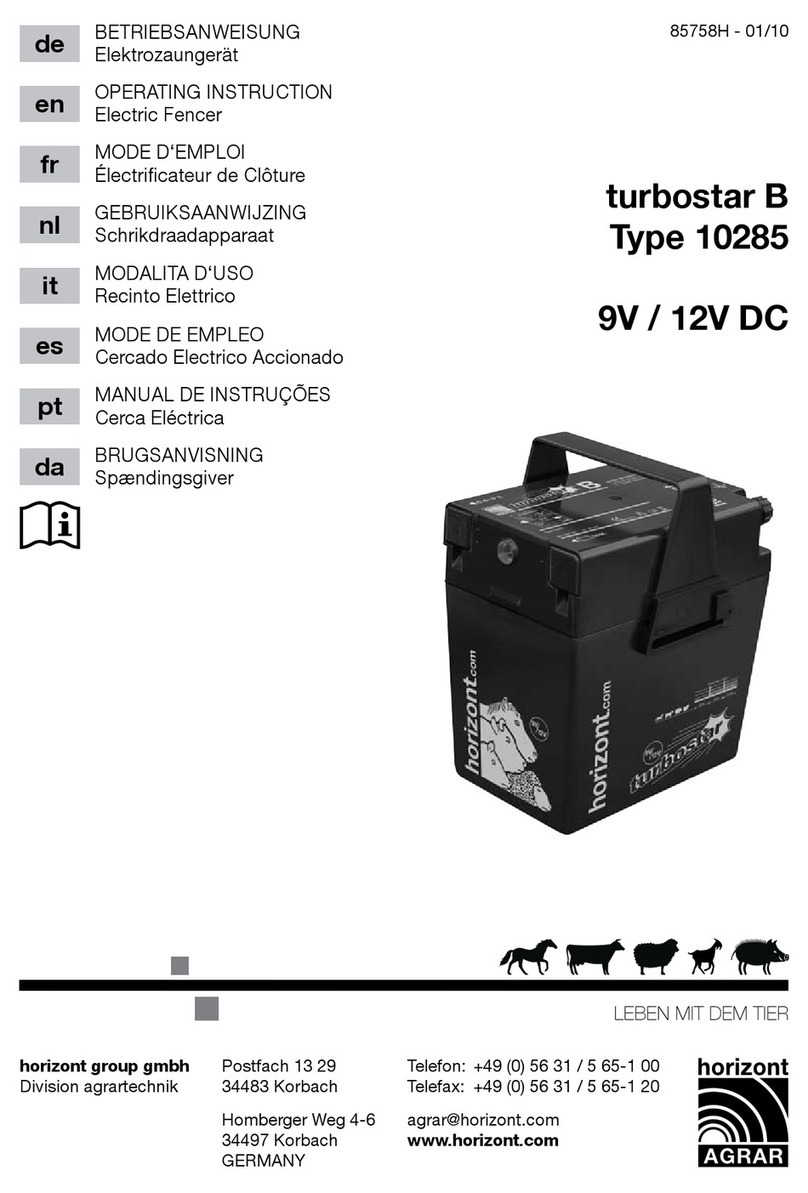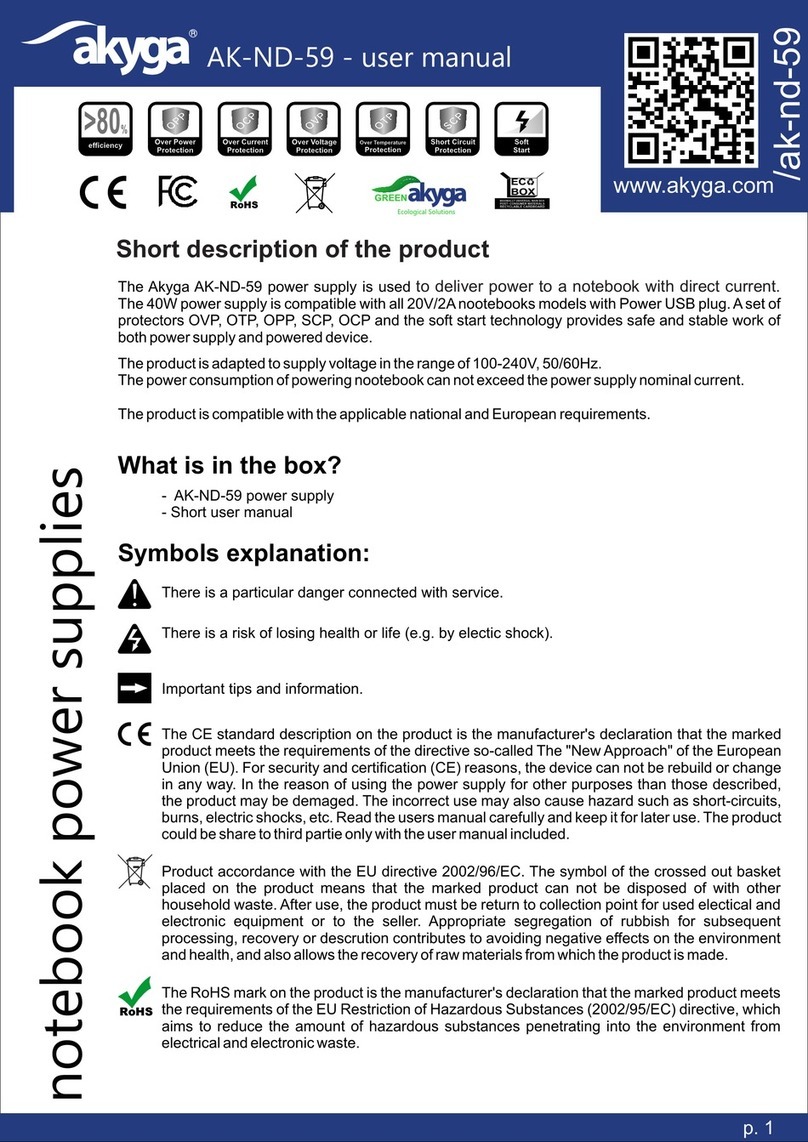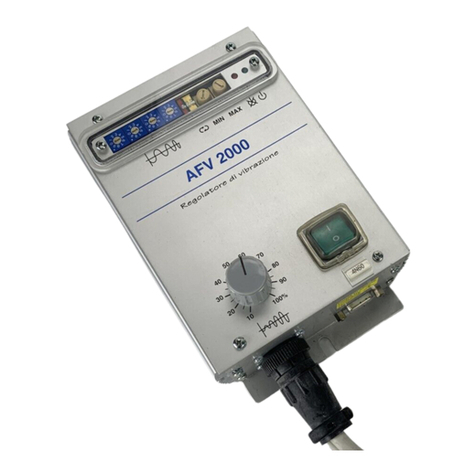roal RCB1200 User manual

The RCB1200 user manual has been prepared by the Roal Electronics design team to assist qualified engineers
in correctly implementing the products and to achieve the best reliability and performance.
At time of print, the information contained in this document is believed to be correct and accurate. However, specifications are subject to change
without prior notice and Roal Electronics will not be liable for any damage caused as a result of the information within this document. For
continued product improvement, please report any errors contained in the document to Roal Electronics SpA.
The RCB1200 is a modular configurable switching mode power supply offering an extreme flexibility, high efficiency,
sophisticated control functions and an industry leading power density exceeding 20 W/in3. In fact, the RCB1200 is capable of a
total 1200 W of continuous output power in a (6.05 x 6.09 x 1.61) in package.
This power supply is an effective power solutions for all system designers as they address the pressing demands for more
power within less space, higher efficiency, sophisticated control features and wider flexibility.
The basic system consists of two independent input sections each of them providing 600 W of continuous power to their
respective output sections. Each output section consist of four slots where can be plugged a 150 W fully isolated output
module.
Each section offers, as a standard, a +5 V, 200 mA isolated bias supply, an AC mains signal (AC_OK), an individual and a
global inhibit signal (INH or GINH) through which each single or all output modules simultaneously can be enabled or disabled.
Output modules are currently available in single output voltage types with models voltage ranges covering from 1.5 V to 58 V
and currents up to 25 A. All outputs can be connected in parallel or in a series resulting in a voltage range of up to 232 V and
a maximum current of up to 100 A, from a single section of the power supply.
All modules are supplied with advanced voltage and current control functions, sense signals and a regulated +5 V bias supply
capable of 20 mA, as a standard.
The RCB1200 cooling is provided by two built in fans, which speed is independently and automatically controlled by the
corresponding input section of the power unit. This system ensures the unit proper cooling in any operating condition
maintaining at minimum fan’s RPM and, in turn, acoustic noise.
The RCB1200 carries IEC/EN/UL 60950 2nd edition safety approvals and comply with EN61000-3, EN61000-4 and EN55022
class B EMC standards, making it suitable for all types of industrial and telecoms applications.
RCB1200
User Manual
RCB1200 OVERVIEW
DISTRIBUTED BY TEXIM EUROPE

2
RCB1200 OVERVIEW 1
CONFIGURATIONS AND ORDERING INFORMATION 3
INSTALLATION NOTES 4
THEORY OF OPERATION 5
INPUT MODULE OPERATION 7
SIGNALS 10
OUTPUT MODULE OPERATION 12
ADVANCED OUTPUT MODULE FEATURES 15
OUTPUT MODULES IN SERIES 18
OUTPUT IN PARALLEL CONFIGURATION 19
MECHANICAL –DIMENSIONS AND MOUNTING 23
MECHANICAL –CONNECTORS AND PINS ASSIGNMENT 24
CONFIGURING YOUR POWER SUPPLY 25
SAFETY 30
EMC COMPLIANCE 31
RELIABILITY 32
CONTENTS
DISTRIBUTED BY TEXIM EUROPE

3
The RCB1200 part numbering system is easily comprehensible following the scheme here below.
A power unit part number can also be easily accessed through the descriptive label placed on its top surface (see picture
below). Simply add to the unit part number the letters visible through the lid holes following the order indicated by the lines.
Each letter identifies the selected output module fitted in the correspondent slot.
The following table contains all the characteristic parameters of each Output Module, OP-x, and is a useful guide in identifying
the optimal configuration for every application.
Output
Module
Nominal
Voltage Rated
current Voltage
Adjustment Load
Regulation Line
Regulation OVP Output
Power
A 5 V 25.0 A 1.5 to 7.5 V ±50 mV ±0.1 %VNOM 9.5 V 125 W
B 12 V 15 A 4.5 to 15 V ±100 mV ±0.1 %VNOM 18 V 150 W
C 24 V 7.5 A 9 to 30 V ±150 mV ±0.1 %VNOM 36 V 150 W
D 48 V 3.75 A 18 to 58 V ±300 mV ±0.1 %VNOM 66 V 150 W
0 (zero) Unused slots
Example: For an RCB1200 with 4.5 V at 50 A (2X OP-A in parallel, slots #1,2); 12 V at 25 A (2X OP-B in parallel, slots#3,4);
24 V at 12.5 A (2X OP-C in parallel, slots# 5,6); 100 V at 3 A (2X OP-D in series, slots# 7,8); use “RCB1200-AABBCCDD”.
CONFIGURATIONS AND ORDERING INFORMATION
DISTRIBUTED BY TEXIM EUROPE

4
This power supply is intended for use within equipment or enclosures which restricts access to authorised personnel only. The
instructions in this manual and all warning labels on the product must be followed carefully.
Safety
All power supplies must be installed correctly in a controlled environment which restricts access to any unauthorised
personnel. Equipment and system manufacturers must protect service personnel against unintentional contact with the output
terminals.
Hazards
If series and/or parallel combinations of outputs exceed safe voltage and/or energy levels, the final equipment manufacturer
must provide appropriate protection for both users and service personnel.
Health and safety
To comply with section 6 of the health and safety at work act, a label that is clearly visible to service personnel must be placed
on the final equipment, which warns that surfaces of the power supply may be hot and should not be touched when the
product is operating.
Fusing
The power supply has two internal single pole fusing, one on each of the input section L (Live) line.
Servicing
The power supply contains no user serviceable parts. Repairs must be carried out by authorized personnel only. Contact Roal
Electronics SpA for further information.
Cooling
For proper cooling of the power supply, the air intake and outlet must not be impeded. Allow 50 mm clearance at both ends
and position cabling appropriately. Avoid excessive back pressure in the general system or when using ducting to navigate hot
air out of the system.
Earth terminal marking
To comply with the requirements of UL60950-1, EN60950-1, IEC60950-1, CSA22.2 no. 60950-1, where the incoming wiring
earth is intended for connection as the main protective earthing conductor and where the terminals for such a connection is
not supplied on a component or subassembly such as a terminal block, the user shall add an appropriate label displaying a
protective earth symbol in accordance with 60417-2-IEC-5019 directly adjacent to the terminal. The label should be durable
and legible and should withstand the 15s rub test as per UL60950-1 section 1.7.15.
Mounting
Mounting the unit can be done using the bottom or side mounting points. Each mounting point accepts an M4 screw where the
maximum penetration, inclusive of 1.75 mm chassis thickness, should never exceed 4.00 mm. The maximum torque for the
M4 screws is 1.50 Nm.
Other
To prolong the life of the unit, use in dust free environment.
If units are damaged during transit, contact your sales agent or Roal Electronics and DO NOT apply power to the unit.
Always use adequately sized cables and ensure good crimp connections.
Use cable supports to minimise stress on connectors.
Avoid excessive shock or vibration.
General installation parameters
Equipment class I
Installation category II
Pollution degree 2
Material group IIIb (Indoor use only)
Flammability rating 94V-2
IP rating IP10
Altitude of operation 4600 m
RoHS compliance 2002/95/EC
INSTALLATION NOTES
DISTRIBUTED BY TEXIM EUROPE

5
The diagram below outlines the topology and major internal components of a fully assembled system. The system consists of
two independent sections, each of them provides four output slots which can be populated by any combination of output
modules (OP-A, OP-B, OP-C, OP-D). The remaining components in the block diagram are housed in the input stage of each
section.
Both the input stages are responsible for receiving the AC mains line voltage and converting it to an appropriate DC voltage
whilst providing protection from AC line disturbances and preventing excessive EMI emissions and current harmonics. The
integrated EMI filters attenuate high frequency current emissions to levels below EN55022 class B. They also provide single
pole fusing in the live conductor (L) and protection from line disturbances as outlined in EN61000.
The power unit inrush current is controlled by a resistive element present on each input section upon initial connection to the
AC line. Once the internal capacitances have been charged, the resistive elements are bypassed to reduce losses.
THEORY OF OPERATION
DISTRIBUTED BY TEXIM EUROPE

6
Both the input stages are provided with an Active Power Factor Correction (PFC) to ensure an accurate power unit input
current waveform with extremely low harmonic content, exceeding the requirements of EN61000-3-2. These stages also
provide active input current limiting which prevents overloading of each input stage while maintaining high power factor.
The output of the two PFC stages charge their respective hold-up electrolytic capacitors which store enough energy to allow
the system to continue operating during minor line disturbances. These are the only electrolytic capacitors in the entire power
supply and to further increase system reliability, long life and high temperature capacitors are used.
Highly efficient zero voltage switching circuits (ZVS) are used to drive the medically isolated transformers from the hold-up
capacitors. The output modules of each section connect to their respective transformer secondary and provide safe isolated
power to a high performance synchronous rectifier power converter which is controlled using the latest analog control
technology to produce superior output performance in an extremely reduced size.
Two built in fans, which speed is automatically controlled, ensure the unit proper cooling in any operating condition
maintaining at minimum its RPM and, in turn, acoustic noise. The control function directly correlates each fan supply voltage to
the control voltage derived from the respective half bridge current sense resistor. The secondary control input is derived from
non-linear temperature sensors located near the rectifiers on each input section.
DISTRIBUTED BY TEXIM EUROPE

7
Start-up and shut-down
The following description refers to each of the RCB1200 power supply primary section and its relative output modules, unless it
is explicitly stated otherwise.
Each input module operates from a universal input voltage range and start automatically upon application of adequate AC
mains voltage (>84 VRMS). After a short delay, the global “+5V bias” supply starts and the “ACOK” signal goes high to
indicate that the mains voltage is present and input stage is operating correctly. Once the “ACOK” signal is high, the output
modules turn on and deliver power to the application loads. The “Power Good” signals will indicate that the output voltages are
within specification. The diagram below shows the normal start-up / shut-down sequence and gives typical timings.
Typical timing values: t1= 300 ms, t2= 50 ms, t3= 25 ms, t4= 15 ms, t5= 5 ms (minimum), t6= 100 ms
When the AC mains voltage is removed, the internal hold-up capacitors will supply power to the load for typically 20 ms (t4+t5)
at maximum power. The “ACOK” signal will go low at least 5 ms before the output voltages fall below the power good
threshold level (t5). This allows the application to prepare for the impending loss of power. The “+5V bias” supply will remain
on for typically 100 ms, after the output modules have turned off.
Hold-up
For short line disturbances (<20 ms), the output voltages will not be affected*. However, the “ACOK” signal may still go low to
warn that there is an impending loss of output power. The “ACOK” signal will return to the high state once the unit has
recovered from the disturbance.
*Outputs that are adjusted above the hold-up voltage as detailed in their respective datasheets, may experience a dip in voltage but never
below the hold-up voltage specified.
Idle power
The idle power of the RCB1200 PSU is determined by both the input stages of each section and the input stage of each
assembled output modules.
In the worst case where all modules are connected and enabled, the unit typically requires 56 W with no output load.
To reduce the idle power, the output modules can be disabled using the global inhibit (GINH) pin in each connector of their
correspondent section.
With all the outputs disabled, the unit typically requires less than 42 W.
Over temperature protection (OTP)
Each of the RCB1200 input stages is protected from excessive temperature by means of various internal sensors. In case the
temperature limit is exceeded in one section or both, the same section or both may latch off, with no “ACOK” warning. To re-
enable the whole unit operations, the AC mains must be disconnected for approximately 2 minutes.
INPUT MODULE OPERATION
DISTRIBUTED BY TEXIM EUROPE

8
Power De-rating
The RCB1200 power supply must always be operated within its stated operating limits. Equipment manufacturers and other
users must take appropriate de-ratings into account at all times when specifying a unit for the intended application. If in
doubt, contact your sales representative or Roal Electronics for assistance.
There are two main de-ratings for the RCB1200 power supplies, environment temperature and input line voltage. Temperature
de-ratings apply to both input and output stages, while line de-ratings apply only to the input stages.
For temperature, the de-rating for both input and output stages is 2.5% (of maximum rated power) per degree Celsius above
50 °C. While, for input line voltage, the de-rating for the input stages only is 0.83% (of maximum rated power) per Volt below
120 VRMS. These de-ratings can be calculated
using the following conditional equations;
Equation for line de-rating:
If Vin < 120 VRMS,
Pout = Prated * Line de-rating factor
= Prated * (1- (0.0083 * (120 - Vin))
Otherwise,
Pout = Prated
Equation for temperature de-rating:
If temp > 50 °C,
Pout = Prated * Temp de-rating factor
= Prated * (1 - (Temp - 50) * 0.025)
Otherwise,
Pout = Prated
Depending on the application conditions, one or both of the de-ratings may apply. Where both apply, the de-rating factors
given above can be multiplied together to obtain the total derating factor.
Example: What are the RCB1200 input and output module de-ratings at 60 °C at 100 VRMS line?
Input power rating = Prated * Line de-rating factor * Temp de-rating factor
Output power rating = Prated * Temp de-rating factor
Line derating factor = (1-(0.0083*(120-Vin)) = (1-(0.0083*(120-100)) = 0.83
Temperature de-rating factor = (1-(Temp-50)*0.025) = (1-(60-50)*0.025) = 0.75
Input power rating = 1200*0.83*0.75 = 747 W = 373.5 W available in each section.
Output B/C/D power rating = 150*0.75 = 112.5 W
Output A power rating = 125*0.75 = 93.75 W
DISTRIBUTED BY TEXIM EUROPE

9
Efficiency
The efficiency of the whole RCB1200 power supply is determined by the efficiency of each of its sections which, in turn, is
dependent on several parameters such as input voltage, load level and on the combination of output modules. The plots below
show typical efficiencies of one section of the power unit over the full line voltage and load range and fitted with four of each
type of output module, equally loaded.
An estimate of the efficiency for any particular system may be obtained from these graphs using the procedure outlined in the
example below.
Example: Estimate the efficiency of an RCB1200-AABCDDDD, at 160 VRMS input, 100 W load on each output of the first
section and 140 W on each output of the second section.
1. Define load efficiencies for each output module at specified load and 220 VRMS.
2. Define change in efficiency from 220 VRMS to 160 VRMS for each output module.
3. Sum the values from step one and two for each output module.
4. Calculate the average efficiency for the total system.
Step Details Slot 1
OP-A Slot 2
OP-A Slot 3
OP-B Slot 4
OP-C Slot 5
OP-D Slot 6
OP-D Slot 7
OP-D Slot 8
OP-D
1 Є220 (Load chart) 0.85 0.85 0.88 0.88 0.89 0.89 0.89 0.89
2 ∆Є(220-160) (Line chart) -0.01 -0.01 -0.01 -0.01 -0.01 -0.01 -0.01 -0.01
3 Єx= Є220 + ∆Є(220-160) 0.84 0.84 0.87 0.87 0.88 0.88 0.88 0.88
4 ЄAVE = (Є1+ Є2+ Є3+ Є4+ … + Є8)/8 0.867
DISTRIBUTED BY TEXIM EUROPE

10
To reduce cabling in the end system, all major input and output signals and the global +5V bias supply of each section of the
power supply, are wired to two separated single signal circuit that are accessed through the connectors J2-1 and J2-2 located
at the output side of the chassis as shown in the diagram below.
All signals of each section are referenced to their own bias supply common rails (COM) and external control and/or monitoring
circuits can easily be powered and directly interfaced to the PSU through this connector. Each signals circuit is fully medically
isolated and can be considered a SELV output. The table below lists the isolation voltages.
Signals isolation voltages
Signals to Input 4000 VAC
Signals to Chassis 250 VDC
Signals to Output 250 VDC
+5V bias supply (Power Unit)
Each of the sections of the entire unit, provides a +5 V bias supply that can deliver up to 200 mA. These two supplies are
available whenever the AC mains voltage is connected and their correspondent input stages are operating correctly.
To ensure safety, the following abnormal conditions may cause one or both power supply’s sections to latch off, which will
disable their +5V bias supply:
Over temperature of any stage of the section
Over voltage on the correspondent output
Internal over current (device failure)
AC mains signal _ ACOK (Output)
An ACOK signal is provided by each section to indicate to the user that the AC mains voltage is applied and the correspondent
input stage is operating correctly. This output signal is driven from an internal operational amplifier as shown in the following
diagram. Under normal operating conditions this signal gives a warning of 5 ms before the correspondent section output
voltage falls below the power good threshold. However, to ensure safety, the following abnormal conditions may cause one or
both power supply’s sections to latch off without an ACOK warning:
Over temperature of any stage of the section
Over voltage on the correspondent output
Internal over current (device failure)
Pin Name Description
1 PG1/5 Power Good Slot
1/52 INH1/5 Inhibit
3 PG2/6 Power Good Slot
2/64 INH2/6 Inhibit
5 PG3/7 Power Good Slot
3/76 INH3/7 Inhibit
7 PG4/8 Power Good Slot
4/88 INH4/8 Inhibit
9 GINH Global Inhibit
10 ACOK AC mains signal
11 +5V Global 5V Bias
12 COM Common
SIGNALS
DISTRIBUTED BY TEXIM EUROPE

11
Power Good signals _ PG1-PG4 (Output)
Each output module provides a power good (PG) signal to indicate when the output voltage is above approximately 90% of the
preset voltage for that module. Each PG signal on an output module is internally connected through an opto-isolator to the
correspondent signals circuit, which buffers the signal through a PNP transistor with a 10 kΩ pull down resistor, as shown here
below.
The LED on the front of each module gives a visual confirmation of the PG status.
Note that remote adjustments of the output voltage using the Vcontrol and Icontrol pins do not change the PG signal threshold.
The PG threshold is always approximately 90% of the voltage set with the manual potentiometer.
Output Inhibits _ INH1-INH4, GINH (Input)
The signals circuit of each section, provides four inhibit inputs to disable each of its output module individually and a fifth
global inhibit input (GINH) to inhibit all modules of the correspondent section simultaneously. Each inhibit input is internally
connected through an opto-isolator to the respective output modules. The basic internal electrical circuit and timing diagrams
are shown below. Typically, tOff = 100 µs and tOn = 8 ms.
Relatively to each section of the RCB1200 power unit, to inhibit each output module individually, its GINH should be connected
to the respective COM, and +5 V applied to the appropriate input INH1/2/…/8. To start with all outputs in a section inhibited
and then enable them individually, the correspondent GINH should be connected to +5 V, then pull down the appropriate input
INH1/2/…/8. If a GINH in a section is left unconnected, then the correspondent inhibit signals will all behave as global inhibit
inputs for that section. I.e. +5 V on any INH input will disable all outputs.
DISTRIBUTED BY TEXIM EUROPE

12
Power profile
The power profile diagram below is a voltage / current plot that together with the associated table provides details of the main
features of the currently available output modules.
Output voltage adjustment
Each output can be adjusted within the range as described in the table above or in the datasheet. Voltage adjustment can be
achieved by two methods:
1. Manual potentiometer adjustment
Using the manual adjust potentiometer, the preset output voltage (VSET) of each output module is adjustable over the entire
range of VMIN to VMAX as specified in the power profile table above. A clockwise rotation of the potentiometer results in an
increase of the output voltage while an anti-clockwise rotation results in a decrease of the output voltage.
2. Remote voltage programming
Using remote voltage programming, the output voltage may be adjusted beyond the VMIN and VMAX range specified in the power
profile table above. However, certain precautions must be taken to ensure correct operation. Please see the “Advanced output
module features” section for more details.
Over Voltage Protection (OVP)
In the event of an output module fault, the modules are protected against excessive output voltages. This is implemented as a
fixed voltage threshold (VOVP, in the table above) and if the output voltage exceeds this threshold the correspondent section of
the power unit will be latched off. To resume operation of the power unit, disconnect the AC input voltage for 2 minutes,
remove the faulty output module and reconnect the AC input voltage.
Note that no warning is given on the correspondent AC_OK signal for faults of this type.
Over Current and Short Circuit Protection (OCP and SCP)
For increased safety and reliability all output modules in the RCB1200 have over current and short circuit protection. The over
current threshold is typically set at 110% of the rated current and has a constant current, straight line characteristic that
reduces the output voltage as the load resistance decreases. If the output voltages falls below the hiccup voltage threshold
(VHICCUP) the module enters short circuit protection mode. In this mode the output module uses a hiccup scheme to reduce
system losses and potential damage. When in this mode, the output will be enabled for approximately 3% of the time,
disabled for 97% and will attempt to restart at approximately 125 ms intervals. The module remains in this state until the
short circuit condition is removed, at which point the module returns to normal operation.
OUTPUT MODULE OPERATION
DISTRIBUTED BY TEXIM EUROPE

13
Reverse Current Protection (RCP)
The standard output modules use synchronous rectification in the output stages to achieve high efficiency and, as a result, the
outputs can both source and sink current. The sink current is internally limited to approximately -6% of the maximum rated
current. However, in applications where the output modules are connected to external power sources, such as batteries or
other power supplies, certain precautions must be observed to prevent damage to the unit.
The outputs should never be directly connected to to external power sources without some form of reverse current protection
such as an external diode or controlled MOSFET. If protection is not used, large reverse currents which will ultimately result in
damage to the unit will occur, especially when the AC mains is disconnected.
Output Module Average and Peak Power
All modules have an average and peak power rating. The average power of each unit must at all times remain below its
specified limit. However, each output can deliver up to 150% of its average power rating for a maximum of 5 seconds at 50%
duty-cycle, subject to the current limit not being exceeded and subject to the overall average power drawn from that section
being less than the specified average power rating (including any input de-rating due to temperature or line voltage). The
available peak power is a function of the output voltage and maximum current for each module. Full peak power is only
possible when the output voltage is adjusted to VMAX and the maximum current is drawn from the module. Note that both
average and peak power ratings are subject to the same temperature de-rating as the input section (de-rate by 2.5% per °C
above 50°C), but are not subject to any line de-rating.
Start up and Shut down
All outputs are designed to have a regulated monotonic start-up
with a rise time of approximately 3 ms as shown in the diagram
right. The power good signal stays low until the voltage exceeds
the power good threshold (≈90%).
Where multiple output modules are used, in each section, the
default start up scheme is ratio-metric with all outputs starting
at the same time as shown in the diagram right. External
control circuits may be used to implement tracking or
sequenced start up if necessary.
The outputs are not designed to start into a pre-biased load and
may discharge any externally capacitance before beginning to
ramp the output voltage up in the normal way.
At shut-down the outputs enter a high impedance state. Where
no external load is present it may take some time for the
voltage to decay. When driving inductive loads, care must be
taken to limit the voltage at the output terminals so as to
prevent damage to the unit.
Synchronisation
All output modules in the same section of the power unit are synchronised. The typical operating frequency is 260 kHz and
paralleled/seriesed modules will not produce beat frequencies.
DISTRIBUTED BY TEXIM EUROPE

14
Ripple and Noise
The ripple and noise figures stated in the datasheet are defined based on a standard measuring method. To obtain the same
results the same test setup must be used and care must be taken to eliminate any parasitic noise pickup. The diagram below
shows details of the setup and also sources of noise pickup.
Over Temperature Protection (OTP)
Each output module is protected against excessive temperatures. In the event of the internal temperatures exceeding safe
levels the entire correspondent section may be latched off. To resume operation of the power unit, disconnect the AC input
voltage for 2 minutes, ensure external ambient temperatures are within specifications and then reconnect the AC input
voltage. Note that no warning is given on both the AC_OK signal for faults of this type.
Transient Response
The RCB1200 output modules have been especially designed to have high reliability, and to achieve this all electrolytic
capacitors have been eliminated from the design. Due to this, high dynamic load transients can cause relatively high voltage
deviations at the output and although the outputs have a very high loop bandwidth with typical recovery times of less than
100 µs, the voltage deviations may still be excessive for some applications.
An example application is detailed in the diagram below and shows typical responses at the terminals of the output module
and at the load. Notice that the voltage deviation due to cable inductance exceeds the module response and hence a capacitor
located at the module terminals will have little effect at the load. The optimum solution is to locate a low impedance
electrolytic capacitor at the load which will eliminate the inductive cable drop and also reduce the typical voltage deviation at
the module.
DISTRIBUTED BY TEXIM EUROPE

15
Remote Voltage Programming (External voltage control)
The output voltage of the module can be adjusted using an external voltage source connected between the COM and Vcontrol
pins on the signals connector (J5) as shown below.
In this configuration the output voltage will follow the equation below,
Vo= Vset ((1.8 - Vctrl) / 0.6), where Vset is the manual preset voltage of the module.
The output voltage can be controlled from 0% to 300% of the preset voltage using this control method. However, care must
be taken to ensure the output voltage does not exceeed the OVP level, as this is considered a safety hazzard and will latch the
correspondent section off.
To determine the level of control voltage that will trigger OVP, insert VOVP into the equation above.
Example: VOVP = 9.5 V, Vset = 5 V; Vctrl = 1.8-(VOVP*0.6/Vset) = 0.66 V
Hence, Vctrl should never fall below 0.66 V, otherwise OVP may latch the entire unit off.
Alternatively, by manually adjusting the output voltage to less than 1/3rd of the OVP voltage ensures that OVP can never be
tripped by remote voltage control.
Care must be also taken to ensure that the output voltage would not be forced below the VMIN limit, which is stated for each of
the output modules (OP-A, OP-B, OP-C and OP-D) in the data-sheet. Exceeding in the output voltage adjustment below the
minimum limit, means to force the module output stage to operate in electric overstress, leading to a possible damage more
likely the higher the output current required by the load.
Similarly to the above, the control voltage which correspond to the VMIN level of the output voltage is:
VMIN = Vset ((1.8 – Vctrl) / 0.6; Vctrl = 1.8 – (VMIN*0.6) / Vset
Example: VMIN = 1.5, Vset = 5 V; Vctrl should not be higher then 1.62 V
Also, remote adjustment of the output voltage using the Vcontrol pin does not affect the preset power good threshold. Hence,
remotely adjusting the output voltage below 0.9*Vset will cause the power good signal to go low.
ADVANCED OUTPUT MODULE FEATURES
DISTRIBUTED BY TEXIM EUROPE

16
Remote current programming (External voltage control)
The output current limit of the module can be reduced using an external voltage source connected between the COM and
Icontrol pins on the signals connector (J5) as shown below. In practice, this also means that the output can be used as a
modulated or constant current source.
In the diagram above, Vi_out is an internal voltage source that is proportional to the internal inductor current and approximates
the equation,
Vi_out = 0.6 + (Iout/(Irated*1.25)), where Irated is the maximum rated current for the module.
In this configuration the output current limit will approximate the following equation,
Ilimit = (Vctrl-0.6)*Irated*1.25, where Irated is the maximum rated current for the module.
It is not possible to increase the maximum current limit of the module, and control voltages (Vctrl) exceeding 1.53 V will have
no effect on the current limit.
When using an output module as a modulated current source, the output voltage should be manually adjusted to the
maximum that will be required by the application and this will be the upper voltage limit. Once the load is connected, the
output current can then be modulated by applying a control voltage as described above.
Note that the power-good threshold level is fixed and defined by the manually preset voltage. Hence, while the output module
is limiting or modulating the output current this signal may go low.
Output current measurement
The output current of the module can be measured using the Icontrol signal. If this pin is unloaded its output voltage will follow
the equation, Vi_out = 0.6 + (Iout/(Irated*1.25)), where Irated is the maximum rated current for the module.
Note that the Icontrol output voltage is representative of the internal inductor current not the actual load current. However,
this will only have an influence during dynamic events. It is recommended to add an external amplifier (as shown above left)
DISTRIBUTED BY TEXIM EUROPE

17
when using the Icontrol signal to measure the output current as loading the Icontrol signal, even with microamps can cause the
current limit to be reduced. If it is required to measure the output current and adjust the output current limit simultaneously,
this can be achieved by using a clamp circuit instead of a voltage source to adjust the current limit, while continuing to use an
amplifier to measure the output current. An example circuit is shown above right. In this case Vctrl will control the current limit
while the amplified Icontrol signal will provide a measurement of the output current.
Remote sensing
Remote sensing is available on all output modules and can be used to compensate for any voltage drop in the main power
leads between the power supply and the load. To implement remote sensing connect the positive sense pin (S+, connector
J5.2) to the positive side of the remote load and the negative sense pin (S-, connector J5.1) to the negative side of the remote
load. The voltage will be regulated at the points where the sense cables are connected.
Active protection against worn out power cables or accidental power cable removal is provided and prevents damage to the
unit in each case. An internal circuit measures the voltage between S+ to V+ and S- to V-, when this voltage exceeds the
thresholds specified in the datasheet, the output voltage is reduced to benign levels. During system design, care must be
taken to ensure power cables have a sufficiently low voltage drop at maximum load current to ensure this protection does not
activate unintentionally.
In systems where remote sensing is not used, the output voltage at the power terminals will be slightly higher than that at the
sense terminals. This voltage difference is termed, open sense off-set and occurs due to internal bias currents in the sensing
circuit. Factory set units are set with the sense cables connected unless otherwise specified.
Local Bias supply
A local non-isolated +5 V bias supply is provided on each output module (+5 V on J5.6, referenced to COM on J5.5). This
supply is intended to power interface circuits for monitoring and controlling the output modules, such as amplifying the current
output signal as described earlier. The output can supply up to 10 mA maximum, and exceeding this can damage the unit.
Also, as COM is connected to an internal voltage that is NOT equivalent to S- or V-, particular attention must be given to
grounding issues when interfacing COM to any control circuit in the application. Connecting COM to S- or V- may result in
damage to the unit.
DISTRIBUTED BY TEXIM EUROPE

18
RCB1200 output modules of the same type can be seriesed in any number to achieve higher output voltages, even across
multiple chassis. The following instructions must be followed for output modules configured in this manner.
Isolation to ground
Care must be taken not to exceed the output module isolation to chassis ground when seriesing outputs. Each output is rated
for 250 V maximum between each output terminal and chassis ground. Exceeding this voltage may damage the unit.
Remote sensing
For seriesed modules, remote sensing is achieved by connecting the upper most positive sense terminal (S+) and the lower
most negative sense terminal (S-) from the series of modules to their respective load regulation points. All inner sense
terminals in the series must be daisy chained, S+ to S- from the first module in the series to the last module in the series. An
example of two seriesed modules is shown below.
Series remote voltage/current control
Remote voltage and/or current control is possible with any number of outputs in series using the advanced V-control and
I-control functions as described earlier. However, individual control of each module can be complex as the various control
terminals are referenced to the positive output of the preceding module and require the use of multiple isolated control
voltages to attain control over the full voltage range. In practice, individual control of each module is rarely required and a
more straightforward method is to control all outputs simultaneously with a single control voltage. With RCB1200 output
modules this is effortlessly achieved with the use of an external tracking circuit, details of which can be provided upon request.
Using the external tracking circuits allows all modules in a series to be controlled by a single control voltage that can be
referenced to the COM (J5.5) pin on any module.
SELV precautions
Where series combinations of output modules exceed 60 V, the output can no longer be considered SELV (Safety Extra Low
Voltage) and hence the final equipment manufacturer must provide suitable protection for both users and service personnel.
WARNING!
Energy and voltage hazards may arise when individual modules are seriesed.
See the Safety section for more details.
OUTPUT MODULES IN SERIES
DISTRIBUTED BY TEXIM EUROPE

19
RCB1200 output modules of the same type can be paralleled in any number within the same section to achieve higher output
currents. Paralleling across the two sections in the same chassis is not possible without external protection (such as external
diodes or controlled MOSFETs) to prevent circulating currents between them. Failure to provide such protection may result in
damage to the units.
WARNING!
Energy hazards may arise when individual modules are paralleled. See the Safety section for more details.
For best performance, the output voltages of each paralleled module should be adjusted as close as possible.
Follow the procedure below to achieve the most accurate results:
1. Connect all the negative power cables together.
2. Adjust the first module (1) to the desired voltage.
3. Connect a voltmeter between the positive terminal of the first module (1) and the positive terminal of the
second module (2) and adjust the second module (2) until the voltmeter reads 0.000 volts.
4. Repeat step 3 for the remaining modules, always using the positive terminal of the first module (1) as the
reference.
When paralleled, the outputs can operate in two distinct modes, Normal parallel mode or Share parallel mode.
Normal parallel mode
For normal parallel mode, the positive power cables should be connected together and the negative power cables should be
connected together. No other connections are required as shown in the diagram below.
In this mode the highest adjusted output module will supply all of the load current until its current limit is reached. If the load
demand exceeds this level the output voltage will drop to the level of the next highest adjusted module and that module will
begin to supply the load current while the first module continues delivering full current. This process repeats for the total
number of paralleled modules. The diagram above shows the V-I curve for such a system.
OUTPUTS IN PARALLEL CONFIGURATION
DISTRIBUTED BY TEXIM EUROPE

20
Output modules that are not delivering current will typically sink a small amount of current from the other outputs, but this
will not exceed -6% of each modules maximum rated current.
Typically, system reliability is reduced as the higher adjusted modules will do most of the work with the lower adjusted
modules only delivering current during peak load demand.
Share parallel mode
In Share parallel mode, the outputs are paralleled as before and the Ictrl pin for each module is connected together as shown
in the diagram below.
Connecting the Ictrl pins together forces all the outputs to deliver the same current, ensuring that the system reliability is
maximised and the work load is distributed evenly across all paralleled modules.
In this mode, the lowest adjusted output module will determine the actual output voltage and all higher adjusted outputs will
reduce their voltage. There may be a small amount of circulating current between the modules, approximately 6% of the
maximum rated current for each module.
The current output signal (Ictrl) can still be used to measure the output current but it must be scaled by N, where N is the
number of paralleled modules.
WARNING!
Care must be taken to avoid differential voltages between the negative power output terminals of the paralleled
modules as this can cause errors at the control pins. To avoid this, it is recommended that a low impedance
connection be made between the negative power terminals close to the PSU output and cables then connected
from this common point to the load.
Paralleling across multiple chassis
Paralleling across multiple chassis is not possible without external protection (such as external diodes or controlled MOSFETs)
to prevent circulating currents between each chassis. Failure to provide such protection may result in damage to the units.
Consult Roal Electronics for details on how best to implement such applications.
Where units are paralleled across multiple chassis, the outputs in each chassis will not be synchronised and the peak-to-peak
output ripple may contain beat frequencies in the audio spectrum.
DISTRIBUTED BY TEXIM EUROPE
Table of contents
Other roal Power Supply manuals
Popular Power Supply manuals by other brands
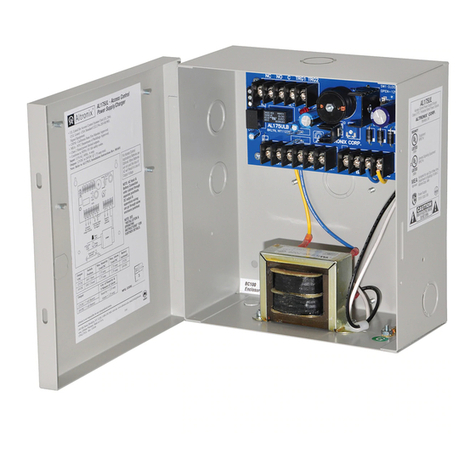
Altronix
Altronix AL175UL installation instructions
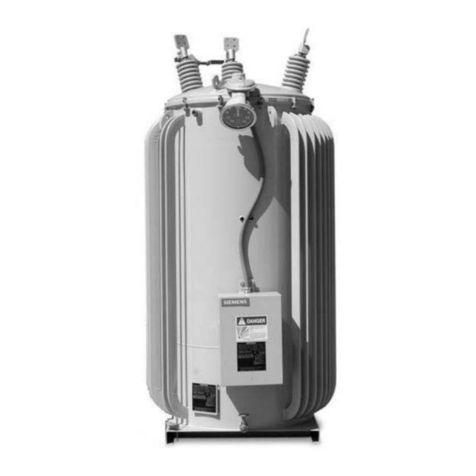
Siemens
Siemens PR4018-05 instructions
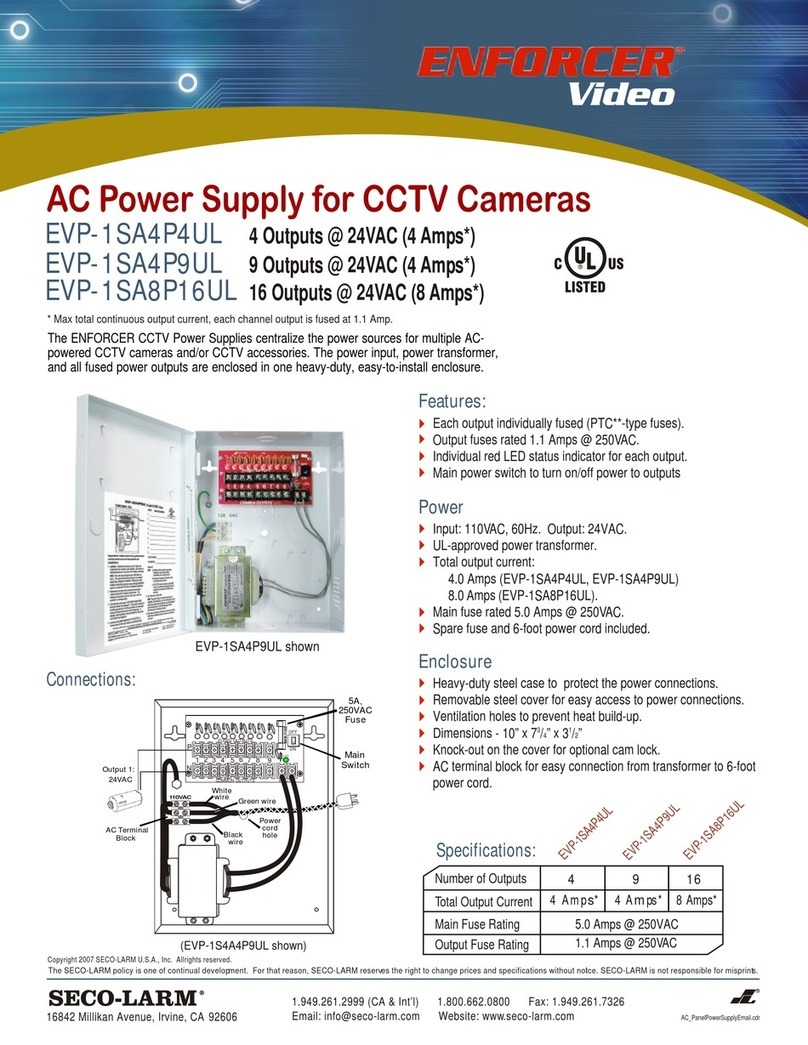
SECO-LARM
SECO-LARM Enforcer Video EVP-1SA4P4UL Specifications
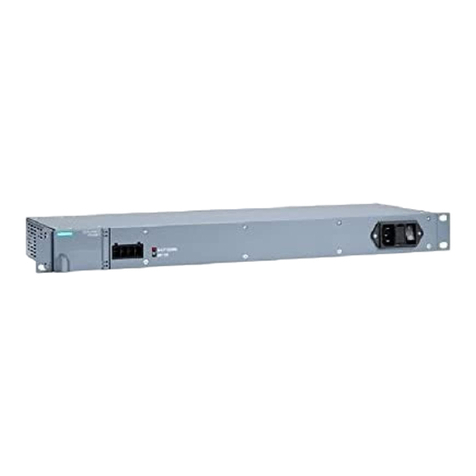
Siemens
Siemens SIMATIC NET PS598-1 Compact operating instructions
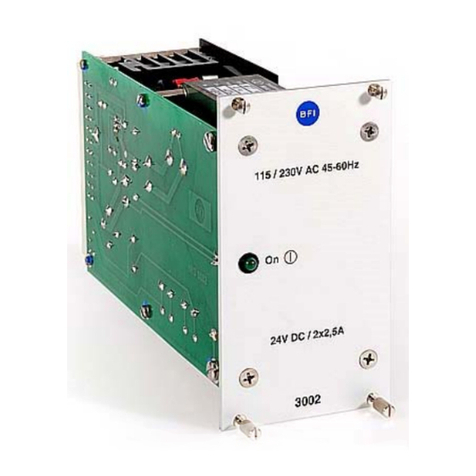
BFI Automation
BFI Automation 3002 Original operating instructions
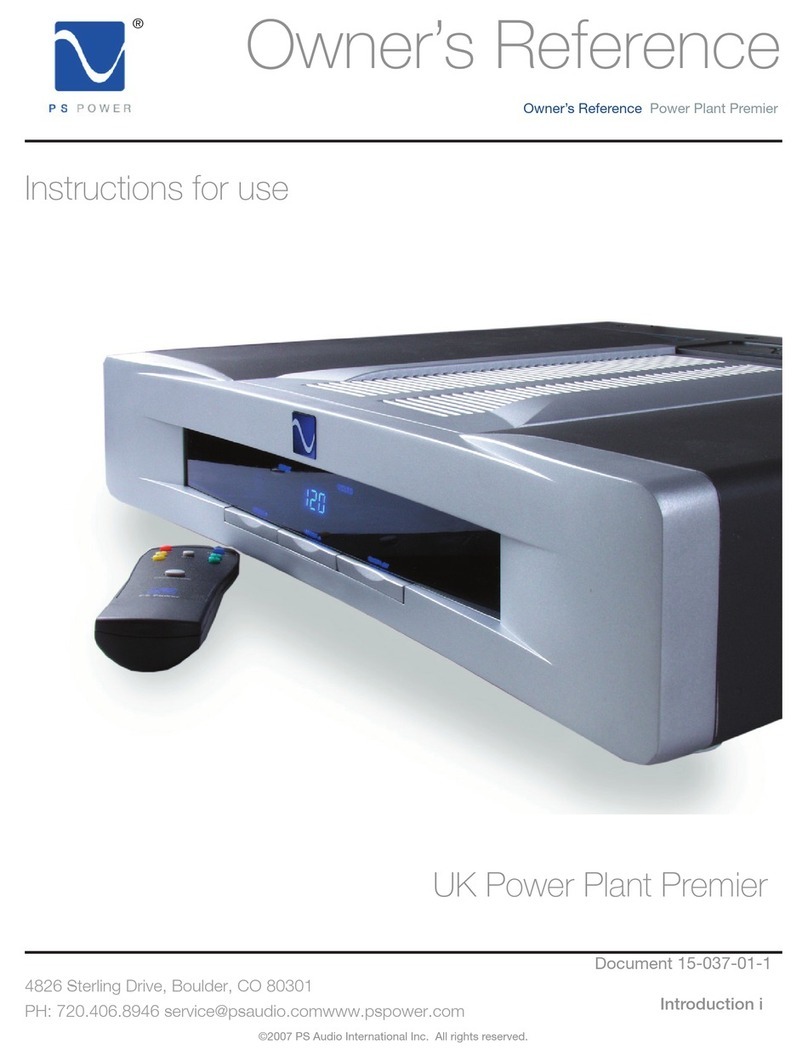
PS Audio
PS Audio Power Plant Premier Owner's reference
